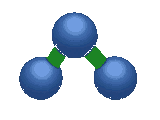 |
LABORATORIO DE FISICA DE LA ATMOSFERA | |
Universidad Mayor de San Andrés - La Paz Bolivia |
|
 |
LABORATORIO DE FISICA DE LA ATMOSFERA | |
Universidad Mayor de San Andrés - La Paz Bolivia |
|
GENERAL INFORMATION
In 1995 the Laboratory of Ozone and Ultraviolet Radiation (LORUV) was set up, within the
"Physics Department" at the state University "Mayor de San Andres" in
La Paz, with the help of the United Nations Development Program (PNUD).
The founding purpose of LORUV is to enable physicists to monitor and study the natural environment and in particular levels of ultraviolet radiation in the Andean region. LORUV also sets out to inform and educate the inhabitants of high altitude cities, such as La Paz (16.5 º S, 68.1º W, altitude from 3100 to 4000 m a.s.l), of the impact and effect of increasing levels of UV radiation on the natural and built environment
Panoramic view as seen from the laboratory
The continued work of LORUV has been made possible through financial and scientific support from other organisations both at a national and international level. Since its inception LORUV has collaborated with the Brazilian National Institute of Spatial Research (INPE) enabling LORUV to become a member of the South American network for ozone layer monitoring, headed by INPE.
In the fields of photobiology and atmospheric physics, LORUV is involved in collaborative projects with a number of organisations including the Environmental Fund for the Americas (EIA-FONAMA) and the "Fondo Argentino de Cooperación Internacional (FO-AR).
Over the years the laboratory's activities have been extended to include the study of meteorology and the green house effect. With this extension of LORUV's work it seemed appropriate to change its name to that of the more all-encompassing title of "Laboratory of Atmospheric Physics ". The Laboratory continues to pursue both its scientific and social founding aims.
LORUV has been awarded a number of national research prizes, including 1998 Best
University Research Project in the Field of Natural Sciences (see picture), in recognition
of it's important work within the field of Natural Sciences (1998). See picture.